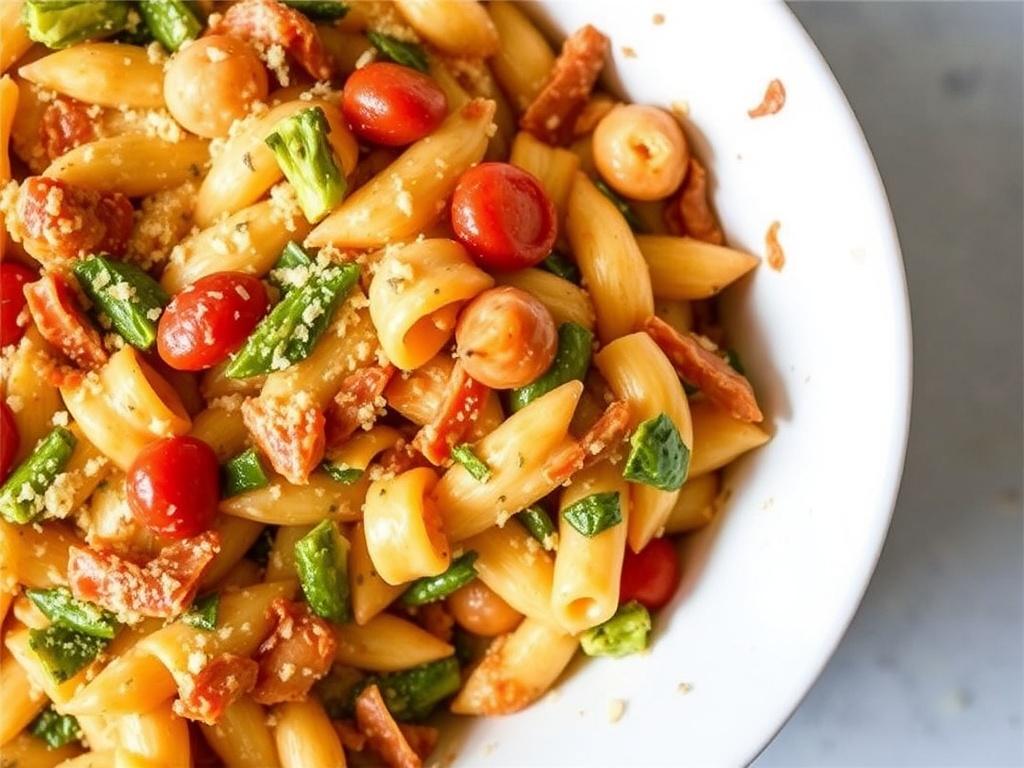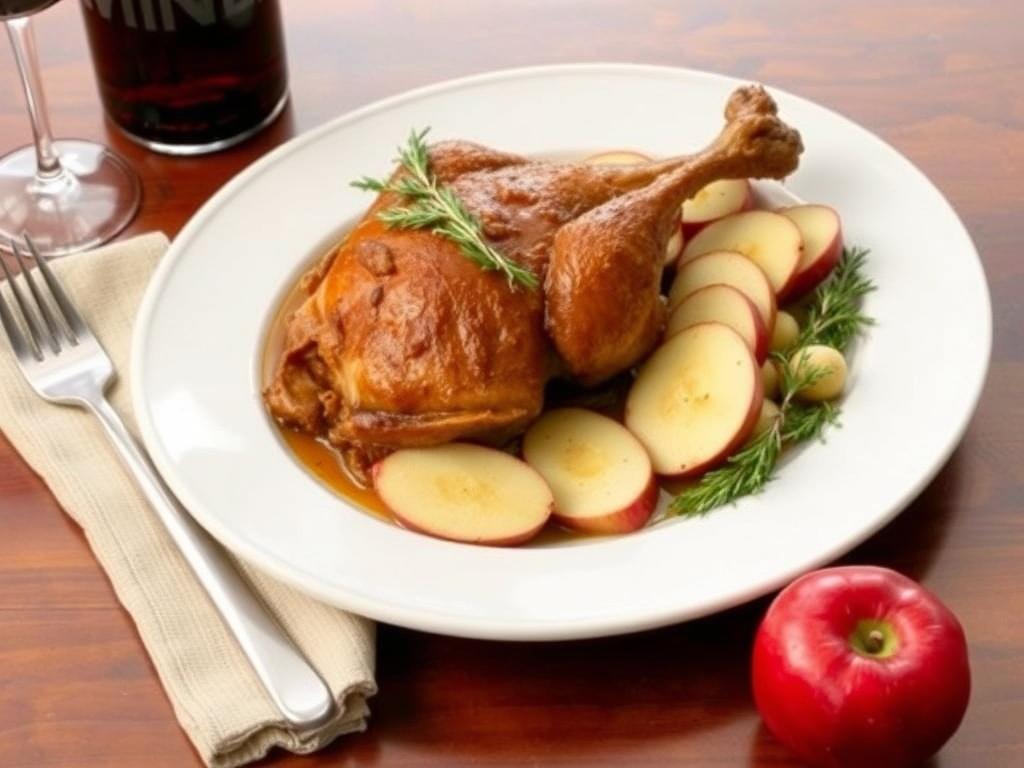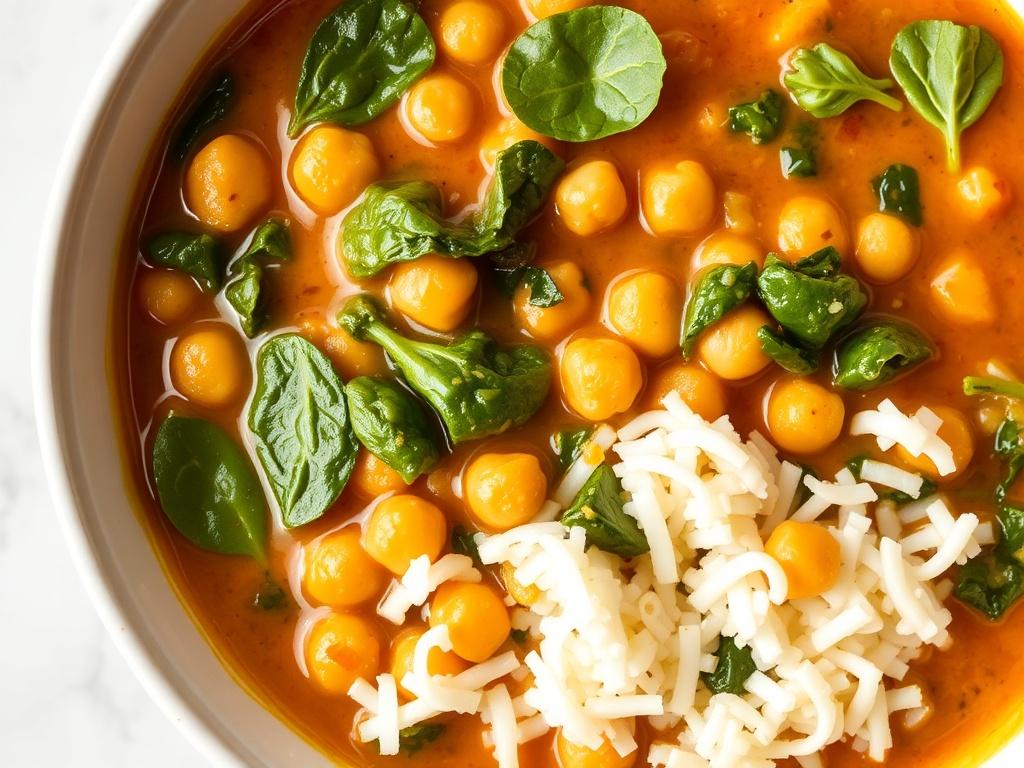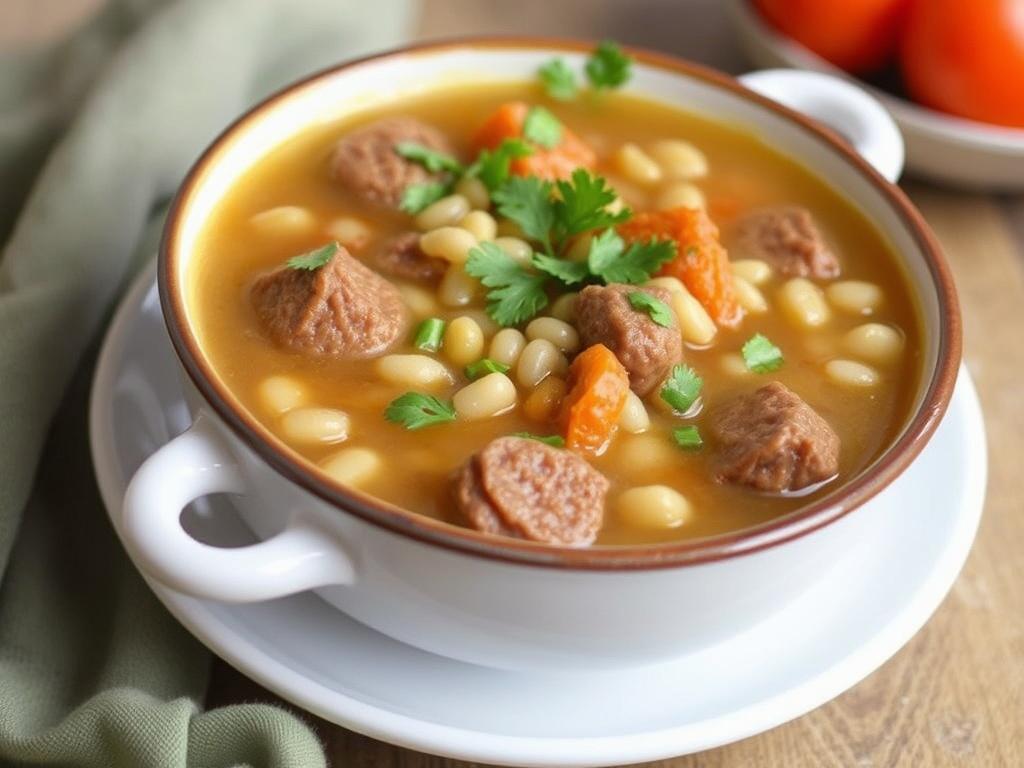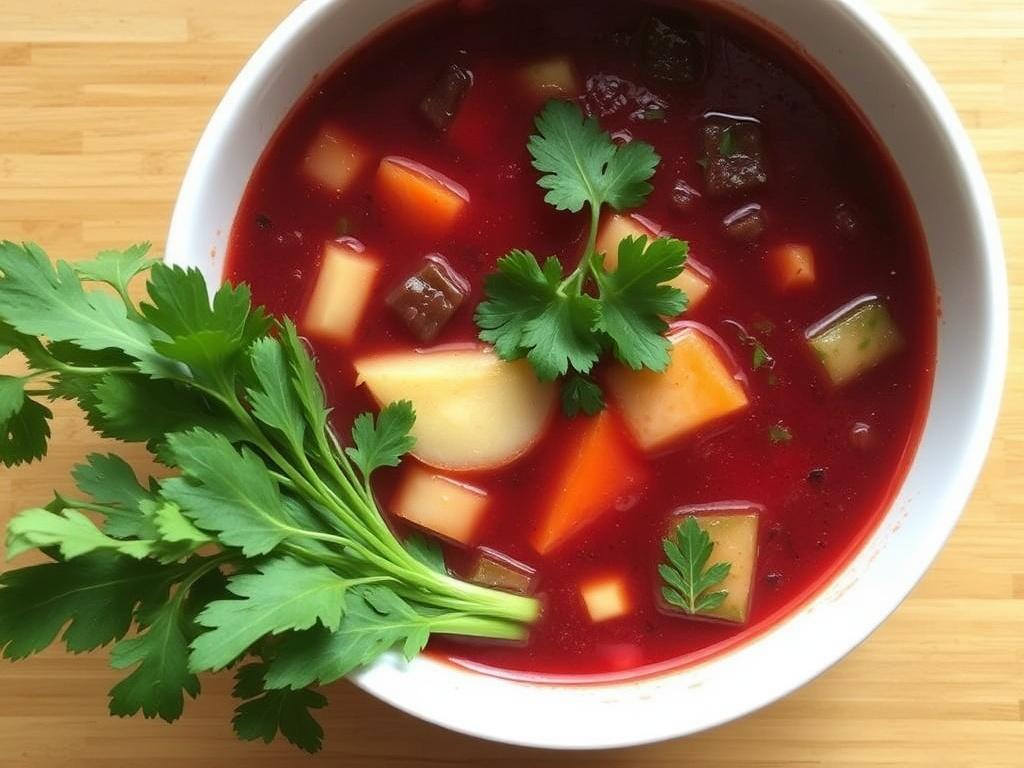Homemade Chicken Broth: The Savory Foundation That Transforms Everyday Cooking
There’s a particular comfort that comes from a pot simmering on the stove, the kitchen filling with warm, savory steam and the promise of something nourishing at the end of the day. Homemade Chicken Broth is more than a liquid base; it’s culinary insurance, a remedy when you’re feeling under the weather, and a secret ingredient that lifts simple dishes into memorable meals. In this article I’ll walk you through everything worth knowing about making, storing and using homemade broth at home, from choosing bones to coaxing out the best flavor. Expect practical tips, a few science-based notes about nutrition and immune support, and some real-world shortcuts I use myself on busy weeknights. Read on and you’ll never look at a store-bought carton the same way again.
Why Make Your Own: Taste, Nutrition, and Practical Reasons

Making broth at home pays off immediately in taste. A slow, controlled simmer extracts a rounded, deep flavor that canned or boxed broth seldom matches; the difference shows up in soups, sauces and grain dishes. Beyond flavor, preparing your own liquid lets you control salt, fat and any additives, so the finished product can align with dietary needs and personal preferences. There’s also a practical rhythm to it: a weekend batch becomes weekday shorthand, saving time and elevating simple meals with very little daily effort.
On the nutrition side, broth supplies small but meaningful amounts of minerals and amino acids released from bones, cartilage and meat during the simmer. While it’s not a miracle cure, broth supports hydration and can be gentle and nourishing when you’re recovering from illness. Many people reach for a cup of warm broth for immune support and comfort, and there’s moderate scientific backing for the idea that warm, savory liquids help relieve congestion and soothe sore throats. In short, homemade broth is both an ingredient and a resource—the sort of thing that quietly improves cooking and well-being over time.
The Ingredients and Why They Matter
At its core, good chicken broth requires three elements: bones or carcass, aromatics and water. Each component plays a specific role. The bones deliver body, collagen and subtle mineral notes when simmered long enough, while aromatics and herbs add the top notes that define the final flavor. Salt should be added carefully during the cooking process—better to season dishes later using the broth than to over-salt the stock itself.
Quality of ingredients matters. A fresh carcass or meaty bones from a whole roasted chicken produce a more savory base than bare necks and backs alone, though those parts are excellent when combined. Organic or pasture-raised chickens can change nuance but won’t automatically make a broth better; technique and time remain the decisive factors. Vegetables should be fresh or well-preserved, and herbs used judiciously since even a small amount of rosemary or thyme can dominate the pot.
Choosing the Right Chicken Parts
Deciding which chicken parts to use depends on three goals: economy, flavor and gelatin. If you want a rich, slightly gelatinous broth, include meaty bones with connective tissue such as wings, necks and backs. A whole roasting carcass after a Sunday dinner is perfect because it combines flavor-rich meat with bones that will release collagen. For a clearer, lighter broth, use fewer meaty parts and leaner sections, but accept that body and mouthfeel will be reduced.
Many cooks prefer a mix: a carcass or whole chicken combined with leftover parts like wings and drumsticks for extra collagen. If you roast a whole bird first, reserve or freeze the carcass immediately after carving to maintain freshness. For economical cooking, keep a small freezer bag labeled “bones” and add ends of raw or roasted chicken until you have enough for a batch. That practice cuts waste and builds stockpile without extra trips to the store.
Vegetables, Herbs and Aromatics
Vegetables are the chorus to the bones’ solo. The classical trio—onion, carrot and celery—adds sweetness, savory depth and aromatic lift. Use whole onions, rough-chopped carrots and celery stalks; there’s no need for fine dicing since the solids will be strained. Garlic is optional and adds character, particularly when you want a broth with a more pronounced savory edge. Avoid bitter vegetables like Brussels sprouts or cabbage, as they can impart off-notes during the long simmer.
Herbs should be used sparingly and added at different stages depending on their strength. Parsley stems give brightness and are traditionally added early. Bay leaves contribute subtle savory perfume; add them with the vegetables. Delicate herbs like dill or basil should be introduced at the end or reserved for the finished dish. Whole peppercorns work well for clean spice without clouding the broth with ground particles.
Step-by-Step: Making Homemade Chicken Broth
Making broth is a forgiving process but benefits from a clear sequence. Start with bones and any leftover meat, add vegetables and aromatics, cover with cool water and bring to a gentle simmer. Maintain a low, steady heat to avoid agitation that clouds the liquid, and skim foam occasionally. Simmer long enough to extract collagen, typically two to four hours for a light stock and up to 12 hours for a deeply concentrated result, then strain carefully and chill to remove fat.
Small procedural details matter. Using cool water at the start helps draw impurities out slowly for easier skimming, and breaking down large bones exposes more surface area for extraction. If you prefer a clearer finished product, strain through a fine-mesh sieve lined with cheesecloth or a coffee filter. Salt at the very end, adjusting on the fly for the recipes you plan to use the broth in later.
Basic Stove-top Method
The stove-top simmer is the most traditional route and gives you direct control. Place bones and vegetables in a large stockpot, fill with cold water to cover by about an inch, and bring to a slow simmer. Once the surface shows small bubbles, reduce heat so the liquid barely moves and set a timer for periodic skimming. Simmer gently; vigorous boiling drives off flavors and makes the broth cloudy. A typical light broth takes three to four hours, while deeper, gelatin-rich batches benefit from six to twelve hours.
During cooking, check for foam and impurities that rise to the surface and remove them with a ladle. If you see murky bits, a few careful skims will improve clarity. Toward the last hour, taste and make final aromatic adjustments such as adding more parsley stems or a cracked peppercorn. After simmering, strain the broth into a clean container, cool quickly in an ice bath if possible, and refrigerate; once cold, lift the fat cap for a cleaner broth or leave it for storage if you prefer the insulation it provides.
Slow Cooker and Instant Pot Variations
Both slow cookers and pressure cookers have their champions for making broth. A slow cooker offers convenience—set it and forget it for eight to twelve hours without babysitting the stove. It operates at low heat, yielding a steady extraction and usually produces a clear, flavorful broth if you use moderate bone-to-water ratios. The trade-off is longer cook time but minimal hands-on work, which suits busy household schedules.
Instant Pots and other electric pressure cookers drastically reduce cooking time while yielding a concentrated result. Under pressure, collagen and nutrients release faster, so a pressure-cooked batch can be ready in two hours or less. Because the liquid concentrates quickly, be cautious about salt and consider diluting the final stock if you plan to use it as a straight broth. Both methods deliver excellent results, and the choice comes down to how much time you have versus how hands-on you want to be.
Clarity, Gelatin and the Science Behind It
Two common descriptors of a good broth are clarity and gelatin. Clarity mostly depends on gentle cooking and careful skimming. When proteins and impurities are jolted by boiling, they disperse and cloud the liquid; simmering gently encourages them to coagulate at the surface where they can be removed. Straining through fine filters removes remaining tiny particles, producing a clear, attractive broth suitable for consommés and light soups.
Gelatin forms when collagen in bones and connective tissue breaks down into soluble gelatin during simmering. A broth that gels in the refrigerator is a sign of good extraction and adds mouthfeel to soups and sauces. Gelation requires sufficient time and the right cartilage-rich parts; short simmers or lean bones won’t produce a jelly-like set. Gelatin also helps the broth cling to starches and proteins, improving texture in risottos and stews.
Storage, Freezing and Safety
Proper storage preserves flavor and prevents spoilage. Refrigerate broth within two hours of cooking in shallow containers to cool it quickly. Stored in the fridge, well-sealed broth will keep for four to five days. For longer preservation, freeze in portions: ice cube trays for a tablespoon at a time, or quart-sized containers for soups and stews. Freezing not only extends shelf life but also makes it easy to grab the amount you need for a recipe.
When cooling broth, remove excess fat if you prefer less greasiness; the fat solidifies on top when chilled and can be lifted off easily. Label containers with the date so you can track freshness. For frozen broth, thaw in the refrigerator overnight or add frozen chunks directly to hot pots; avoid thawing at room temperature. If reheating, bring broth to a rolling boil and discard if you detect off-odors or unusual textures, as these can indicate bacterial growth.
Storage Times at a Glance
Below is a concise reference to help you manage your stockpile of homemade broth. Use shorter refrigeration times for lightly salted or low-fat broths and longer for freezes. These are practical recommendations to balance food safety and quality for typical home kitchens.
| Storage Method | Typical Duration | Notes |
|---|---|---|
| Refrigerator | 4–5 days | Store in shallow containers, keep below 40°F (4°C) |
| Freezer (airtight) | 4–6 months | Use portioned containers; longer storage safe but flavor declines |
| Frozen cubes | 6–12 months | Best for small quantities and quick use |
Nutritional Value and Immune Support
Broth contains modest amounts of protein, minerals and amino acids, and while it’s not a complete source of nutrition, it serves a useful role in a balanced diet. Amino acids such as glycine and proline come from collagen breakdown and may support gut health and tissue repair. The mineral content varies with the bones and cooking time, supplying small amounts of calcium, magnesium and potassium. These nutrients, together with the warmth and hydration broth provides, contribute to why people reach for a cup during illness.
Regarding immune support, broth offers several indirect benefits. Warm fluids soothe inflamed mucous membranes and improve hydration, both helpful during respiratory infections. The nutritional components of broth supply energy and easily digestible protein when appetite is low, aiding recovery. Scientific studies on chicken soup’s effect on colds suggest symptomatic relief rather than a direct antiviral action; still, for many households this comforting bowl functions as practical immune support during minor illnesses.
Culinary Uses: Where Broth Really Shines
Broth is an underrated multitasker in the kitchen. Beyond classic chicken soup, use it as the cooking liquid for grains like rice, quinoa and farro, or as the simmering base for legumes and beans. It elevates pan sauces and gravies by adding depth without masking primary ingredients, and braising meats in broth keeps them moist while infusing subtle savory flavors. In short, it’s a simple swap: replace water with broth and the dish usually gains complexity and richness.
In my kitchen, a batch of broth seldom lasts more than a week because I use it constantly. Leftovers become the base for a quick noodle bowl, a risotto late in the week, or even a reduction to finish with a splash of cream. Homemade broth shines when it is not the main event but the supporting player; it adds an invisible layer of flavor that cooks and diners notice as “something different” without being able to name it.
Recipes and Ideas for Using Leftover Broth
Here are a few simple directions to put your stockpile to work. For a fast lunch, simmer broth with scallions, a handful of shredded chicken and soba noodles, finishing with a little soy sauce and sesame oil. For richer meals, use concentrated broth to deglaze pans and build a sauce, or reduce it for a glossy glaze on roasted vegetables. You can also poach fish gently in warm broth for a light, fragrant main dish.
Broth also transforms baking and pantry cooking. Use it to add moisture and flavor to savory breads and to hydrate dried mushrooms or sun-dried tomatoes before adding them to sauces. When preparing legumes, start them simmering in broth rather than water to infuse each bean or lentil with savory backbone. These small adjustments are low-effort and deliver disproportionate returns in taste.
Troubleshooting Common Problems
Even the best-intentioned batch can run into simple issues: a cloudy appearance, lackluster flavor or too much fat. Cloudiness most often results from boiling too vigorously; keeping the simmer gentle and skimming regularly usually fixes this. If flavor is weak, you likely didn’t extract enough from bones or didn’t use a sufficiently concentrated ratio; cook a second batch with the same bones or reduce the broth by simmering until it concentrates. Too much fat is easily remedied by chilling and skimming the solidified layer off the top before reheating.
Salt balance is a frequent stumbling block. Add salt sparingly during cooking and correct seasoning in the finished dish; many recipes assume unsalted broth and will call for a measured amount of salt later on. If the broth is too salty already, dilute with unsalted water or add peeled potato chunks during a brief simmer to absorb some of the excess, removing them before serving. If your broth tastes bitter, it may have held onto overcooked vegetables; start anew with more restrained vegetable additions next time.
Flavor Variations and International Twists
Broth is a canvas for regional flavors. Add ginger, scallions and a splash of soy sauce to the base for an East Asian profile; toss in star anise and cinnamon for a faintly aromatic hint used in some Vietnamese stocks. For Mediterranean notes, introduce tomato paste and bay leaves and finish dishes with a squeeze of lemon. These small adjustments shift the broth’s direction without requiring a complete rework of technique.
Experimentation can be rewarding. I sometimes roast bones and vegetables before simmering to add caramelized depth, a trick that builds a roasted character without lengthening stove time. Another approach is to incorporate dried mushrooms for an umami boost, particularly useful when the broth will be used in vegetarian-styled preparations that still lean on chicken stock for body. Balance is key—strong spices should complement, not overwhelm, the chicken’s natural flavor.
Economics and Sustainability: Waste Not, Want Not
Making broth is inherently economical. Using leftover carcasses, trimmed bones and vegetable scraps minimizes waste and stretches the value of primary ingredients. Instead of discarding onion skins, carrot peels and celery leaves, collect them in a freezer bag; once full, add them to a pot with bones for a robust, no-cost broth. This practice reduces grocery bills and aligns with sustainable cooking principles that value the whole ingredient.
Beyond savings, homemade broth reduces packaging waste compared to store-bought cartons and offers flexibility: you can make exactly the amount you need and choose packaging that you reuse. Community kitchens and small restaurants often harness broth-making as part of a zero-waste effort, and home cooks can easily adopt similar habits by planning batches during meal prepping. The cumulative environmental benefit feels modest on its own but meaningful over a year.
Advanced Tips from Experience
Over years of making broth I’ve found that small routines make the process effortless. I always keep a labeled freezer bag for bones and another for vegetable scraps, and when either fills, I start a batch that same weekend. Roasting bones first adds an immediate depth that’s especially welcome in stews, and finishing a broth with a teaspoon of apple cider vinegar early in the cook can improve mineral extraction. These are minor steps but they change the yield and flavor in ways I prefer.
Another habit: portioning broth into different sizes before freezing. Quarter-cup cubes are great for deglazing a pan or finishing a sauce, while two-cup containers are perfect for a single serving of soup. Labelling with dates and intended use reduces decision fatigue later. These small organizational moves turn occasional broth-making into a seamless part of weekly kitchen life.
Safety Reminders and Best Practices
Food safety matters even with something as homey as broth. Always start with clean utensils and a sanitized workspace, especially when handling raw poultry. Cool cooked broth quickly and refrigerate within two hours to prevent bacterial growth; dividing into shallow containers speeds the process. When reheating, bring broth to a full boil for at least one minute to ensure safety, and discard any container that develops off-odors or strange textures.
Be mindful of allergen cross-contamination if you’re storing broths from different sources in one refrigerator, and never reuse single-use packaging for long-term storage. Proper lids, freezer-safe containers and accurate labeling make a surprising difference in both safety and convenience. These small standards protect both flavor and health.
Quick Recipes to Try with Your Broth
Start simple to appreciate the difference real broth makes. A classic chicken noodle soup needs little more than shredded chicken, carrots, celery and egg noodles simmered briefly in warm broth; finish with parsley and a squeeze of lemon. For a comforting weeknight dinner, make a one-pot risotto using broth warmed on the side, adding it ladle by ladle so each grain of rice absorbs the savory liquid. These are straightforward ways to show off the advantage of homemade stock.
If you want a bold first experiment, try poaching chicken breasts in a shallow pan of simmering broth with garlic and thyme, then shred the meat for tacos or salads. The poaching liquid becomes an instant sauce base. Small recipes like these integrate broth into the sorts of everyday meals most of us cook, making the effort to prepare stock feel relevant and rewarding rather than indulgent.
Final Thoughts: Make It a Habit
Homemade Chicken Broth is an ingredient that rewards consistency. Small, regular batches transform into a useful supply that changes the way you cook, improves flavor, and offers gentle nourishment when you need it. The time invested in simmering pays back many times over in convenience and improved taste across dozens of dishes. Adopt a few practical habits—freeze bones, portion finished broth, and label containers—and you’ll find that a warm, savory cup is seldom more than a few minutes away.
Start simple, learn from each batch, and let the broth become part of your routine. Whether you aim to support family meals, soothe a sore throat, or elevate everyday cooking, a homemade pot is one of the most versatile tools in a home kitchen. Over time you’ll develop your own preferences and shortcuts, and the result will be uniquely yours: a flavorful, nourishing base that turns ordinary recipes into something memorable.
